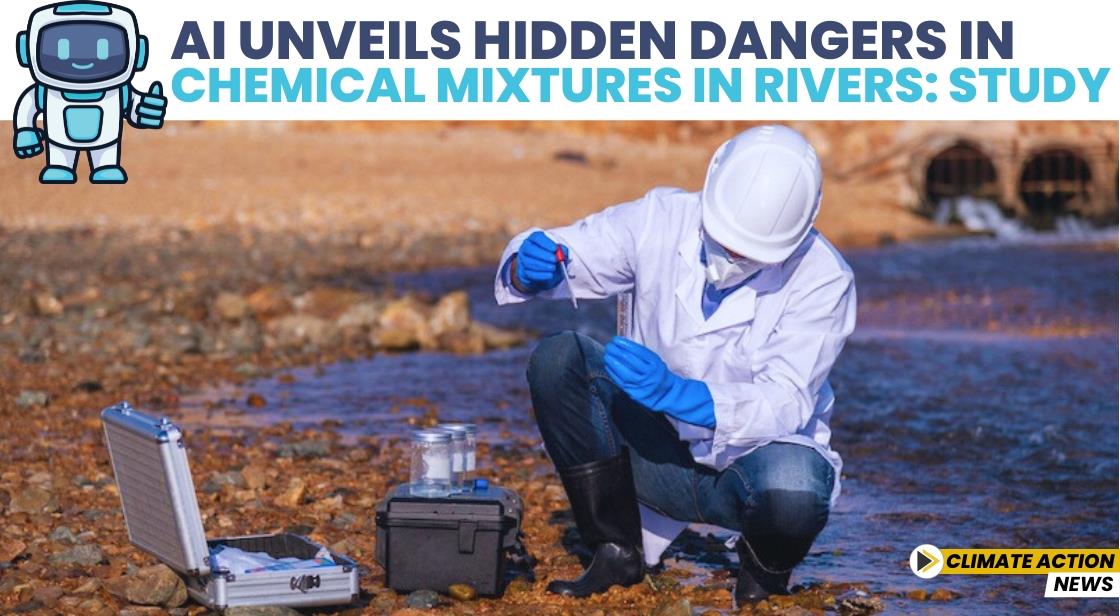AI Unveils Hidden Dangers in Chemical Mixtures in Rivers: Study

News Synopsis
Artificial Intelligence (AI) is proving to be a game-changer in environmental research, offering profound insights into how complex chemical mixtures in rivers impact aquatic ecosystems.
A groundbreaking study by researchers at the University of Birmingham reveals how advanced AI methodologies can identify harmful chemicals in river systems, paving the way for better environmental protection and sustainable water management.
This pioneering research utilized water fleas (Daphnia) as indicators of water quality and collaborated with leading institutions, including the Research Centre for Eco-Environmental Sciences (RCEES) in China and the Helmholtz Centre for Environmental Research (UFZ) in Germany, to monitor water samples from the Chaobai River system near Beijing.
Artificial intelligence has emerged as a vital tool in addressing the pressing challenges posed by water pollution. Researchers at the University of Birmingham have demonstrated how AI can analyze the combined effects of various chemicals in rivers, moving beyond traditional methods that focus on individual substances.
This innovative approach highlights the potential of AI to revolutionize environmental science and create safer water ecosystems.
Daphnia: Nature’s Early Warning System
The study utilized Daphnia, small freshwater organisms known for their sensitivity to water quality. These tiny creatures serve as sentinel species, offering early warnings about environmental hazards. Their genetic similarities with other species make them ideal for studying the effects of pollution on broader ecosystems.
Lead author Dr. Xiaojing Li emphasized the importance of this approach:
"Our innovative approach leverages Daphnia as a sentinel species to uncover potential toxic substances in the environment."
Chemical Mixtures: A Hidden Danger
One of the study’s key findings is that chemical mixtures in rivers can interact in unexpected ways, creating environmental hazards greater than those posed by individual substances. By employing advanced computational methods, the team identified changes in the genes of aquatic organisms, revealing the biological impact of these mixtures.
Dr. Timothy Williams, a co-author, noted:
"Typically, aquatic toxicology studies either use high concentrations of individual chemicals to determine detailed biological responses or only measure apical effects. This study breaks new ground by identifying key classes of chemicals affecting living organisms within genuine environmental mixtures at relatively low concentrations."
Collaborative Efforts for Global Solutions
This research reflects the importance of international collaboration. Working with scientists from China’s RCEES and Germany’s UFZ, the team analyzed water samples from the Chaobai River, which faces pollution from agriculture, domestic waste, and industrial activities.
Professor John Colbourne, a senior author, highlighted the study’s broader significance:
"Water safety cannot be assessed one substance at a time. Now we have the means to monitor the totality of chemicals in environmental water samples to uncover unknown substances acting together to produce toxicity to animals, including humans."
Revolutionizing Environmental Protection
The study represents a major advancement in ecotoxicology, challenging conventional approaches. As Professor Luisa Orsini explained, their methodology’s key innovation lies in its data-driven, unbiased approach, enabling the identification of chemical hazards at environmentally relevant concentrations.
Dr. Jiarui Zhou, who developed the AI algorithms, stated:
"Our approach demonstrates how advanced computational methods can help solve pressing environmental challenges by analyzing vast amounts of biological and chemical data simultaneously."
Conclusion
This groundbreaking study highlights the transformative potential of artificial intelligence in addressing complex environmental challenges. By uncovering the hidden hazards posed by chemical mixtures in rivers, the innovative methodology developed by the University of Birmingham and its global collaborators provides a new lens to understand aquatic toxicology.
The use of Daphnia as a sentinel species and the integration of AI-driven approaches allow for a deeper analysis of environmental risks at even low chemical concentrations.
These advancements not only pave the way for improved water quality monitoring but also challenge traditional ecotoxicological methods, offering a data-driven, unbiased approach to tackle pollution. As AI continues to revolutionize environmental science, this research sets a precedent for regulatory adoption and inspires future efforts to safeguard aquatic ecosystems and human health from the invisible dangers of chemical pollutants.
You May Like









